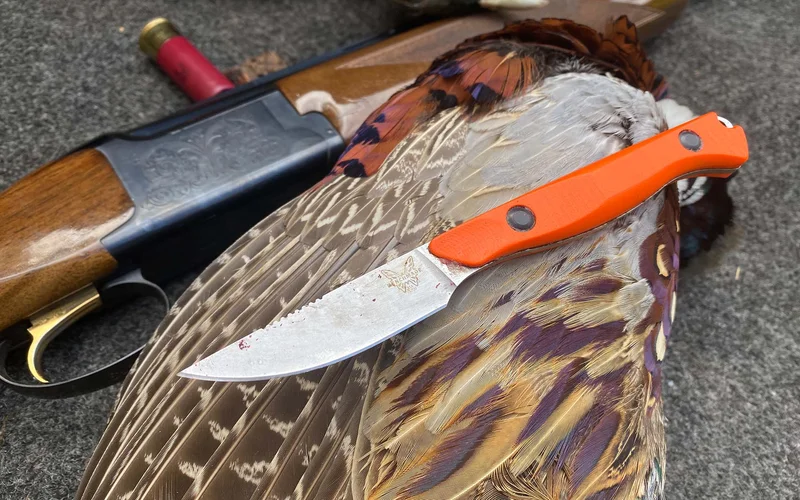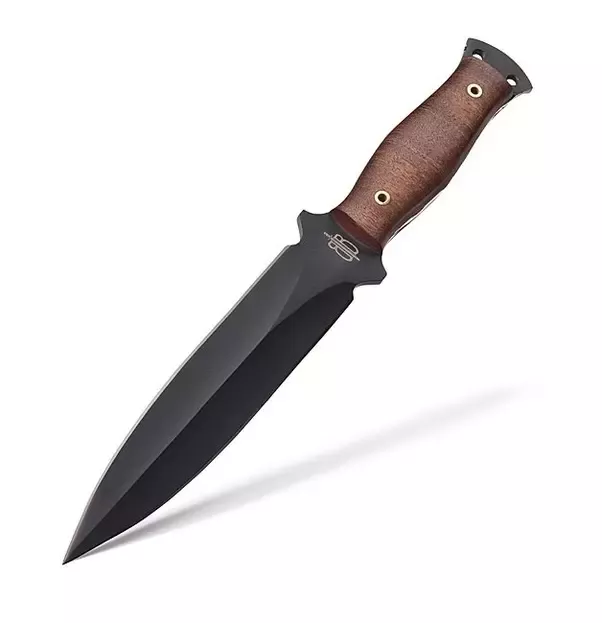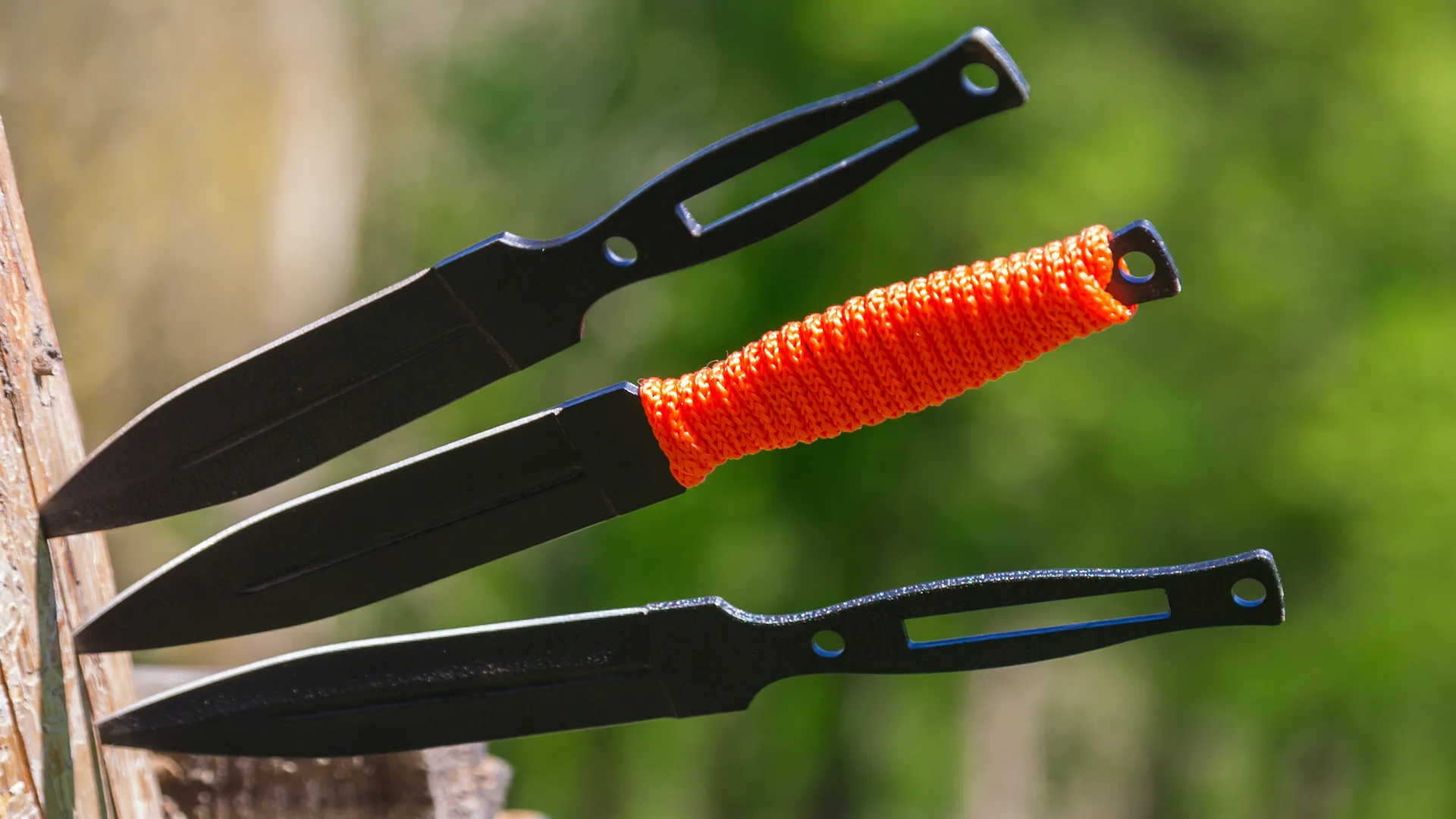Last updated on January 11th, 2024 at 08:41 am
Throwing knives have been tools and weapons for millennia. Knowing what makes a good throwing knife is essential for any knife thrower. This comprehensive guide will help you choose the right throwing knife by examining its major features and traits.
What Makes a Good Throwing Knife?

A good throwing knife has attributes that improve its performance and reliability. Understanding these criteria helps you choose a throwing knife that meets your demands.
Weight, Balance
A throwing knife’s accuracy depends on its weight and balance. A well-balanced knife throws smoothly and predictably, while weight controls air rotation. Throwing style balance is crucial.
Blade Construction
Blade design and material affect sharpness, penetration, and durability. Blade performance depends on shape, length, edge grind, and thickness. Stainless steel or carbon steel impacts the knife’s strength and corrosion resistance.
Build Handle
Knife-throwing requires a comfortable grip. Thrower control and accuracy depend on handle material, texture, and ergonomics. Full-tang knives have superior balance and durability than partial-tang knives.
Quality and Durability
Throwing knives must be sturdy. Throwing knives are repeatedly hit and stressed, thus they must be sturdy. The knife’s durability also depends on its build. Quality-controlled brands provide further assurance.
Precision and Accuracy
Throwing knives need steadiness and predictability to hit targets. Knife shape, weight distribution, and aerodynamics greatly affect accuracy. An aerodynamically optimised knife reduces wind resistance and improves throws.
Weight and Balance: Finding the Perfect Throw
Weight Distribution Importance
Throwing knives rotate based on weight distribution. Proper weight distribution keeps the knife rotating, making throws more accurate. A knife’s centre of gravity must fit your throwing manner.
Balanced vs. Unbalanced Knives
Balanced or imbalanced throwing knives. Unbalanced knives have greater weight in the blade or handle, while balanced blades are evenly weighted. Balanced or unbalanced knives rely on throwing style and desire.
Weight-Balance Factors
Several factors affect throwing knife weight and balance. Blade length, thickness, and material determine weight. Knife balance is also affected by handle material and length. It’s vital to evaluate these criteria and choose a knife that fits your throwing style.
Testing and Balancing
Throwing knife balance may need some experimentation. By grasping a knife at different spots on the handle, you can assess its balance. Tape wrapping or drilling holes can add or remove weight from the blade or handle to adjust balance.
Blade Design and Material: Sharpness and Penetration

Blade Shape/Length
Throwing knives are affected by blade shape and length. Spear point, tanto, and drop point blades pierce targets differently. The knife’s flight stability and penetration depend on its blade length.
Edge Grind/Thickness
Edge grind and thickness affect blade sharpness and durability. Throwing knives feature one flat or convex bevel edge. Personal preference and knife use determine edge grind. Thinner blades penetrate better but are less durable.
Carbon vs. Stainless Steel
Throwing knives are usually stainless or carbon steel. For outdoor use, stainless steel is corrosion-resistant and low-maintenance. Carbon steel blades are sharper and last longer, but they rust more easily.
Blade coatings
Throwing knives have blade coatings for different uses. These coatings can increase corrosion resistance, minimise glare, or improve knife aesthetics. Black oxide, titanium nitride, and powder coatings coat blades. These coatings may improve performance.
Handle Construction: Comfort and Grip

Handle Texture
Throwing knives’ grip and comfort depend on their handle material and texture. Wood, rubber, paracord, and plastics make handles. Comfort, durability, and grip vary by material. Choose a handle material that fits your hand and gives enough traction for throwing.
Comfort and Ergonomics
Ergonomics determine throwing knife comfort and control. Handles should fit the hand for a natural grip. Ergonomic handles reduce fatigue and improve accuracy, helping throwers maintain a consistent motion.
Full vs. Partial Tang
Throwing knives have full-tang or partial-tang handles. Full-tang knives contain a solid metal component from the blade to the handle, giving strength and balance. Partial-tang knives feature a shorter tang integrated in the handle. During intense throwing, full-tang knives are more durable.
Balanced Handle
Knife balance and throwing depend on handle length. Longer handles give leverage and stability for longer throws. In close-quarters or no-spin throwing, shorter handles are easier to manage. Choose a handle length based on your throwing style.
Durability and Quality: Ensuring Longevity
Material Durability
A throwing knife’s strength and toughness depend on its materials. Stainless steel or high-carbon steel are used to make good knives. These materials can survive throwing and keep their shape and sharpness.
Construction Methods
Throwing knives are also durable due to their manufacture. Look for properly heat-treated blades that blend hardness and durability. Focus on the blade grind, handle attachment, and finishing touches as well. A well-made knife will last.
Quality and Brand Image
Consider the brand’s reputation and quality control when buying a throwing knife. Reputable brands examine and inspect their products to ensure quality. Trusted brands ensure the throwing knife’s quality and performance.
Regular Upkeep
Throwing knives must be maintained to last. Before storing, clean and dry the knife after each usage. Prevent rust with a little oil or corrosion inhibitor coat. Check the knife for wear and repair it immediately. Throwing knives last longer with good care.
Accuracy and Precision: Hitting the Target
Stability-Designed Throwing Knife
Throwing knives with stability in flight are more accurate. Look for slim, balanced knives. Avoid knives with excessive protrusions or uneven forms. The design should ensure a steady flight path to the destination.
Predictable Flight Weight Distribution
Throwing knives fly differently depending on their weight distribution. The knife’s weight should be uniformly distributed for steady rotation. Muscle memory and accuracy improve. Balanced weight allows the knife to revolve smoothly and hit the target more consistently.
Wind Resistance Aerodynamics
Throwing knives depend on aerodynamics. A well-designed knife will minimise wind resistance to maintain a stable trajectory even in outdoor windy situations. Look for slim knives with less wind-catching surface area.
Training and Method
While the throwing knife’s design and quality are vital, accuracy and precision also depend on talent and technique. Practise and good throwing skills will improve your accuracy. To maximise throwing knife performance, practise grip, posture, and release.
Common Questions
How should I choose my first throwing knife?
Consider weight, balance, blade design and material, handle construction, durability, and personal preferences when selecting your first throwing knife. Choose a knife that fits your hand and throwing style.
Any knives for throwing?
Many knives can be thrown, but some aren’t. Throwing knives are built for flight and durability. Knives not meant for throwing can be damaged or unsafe.
How should I weigh and balance my throwing knife?
Your throwing style and inclination determine the best throwing knife weight and balance. To throw consistently and accurately, try different weights and balancing points.
Do throwing knives need sharp blades?
Throwing knives need no sharp blade. Some throwers prefer a duller blade to reduce retrieval injuries. A decently sharp blade can assist penetrate the target.
Throwing knives for self-defense?
Throwing knives are for fun, not self-defense. For self-defense, check local throwing knife legislation.
How do I store my throwing knives?
To avoid rusting, clean and dry your throwing knives after each usage and add a small coat of oil. Keep them safe, dry, and cool. Check knives for wear and damage.
Conclusion
Consider weight and balance, blade design and material, handle construction, durability, and quality when choosing a throwing knife.
By learning what makes a good throwing knife, you can choose one that meets your needs and throwing style. Practise safe throwing techniques to increase accuracy and precision.
